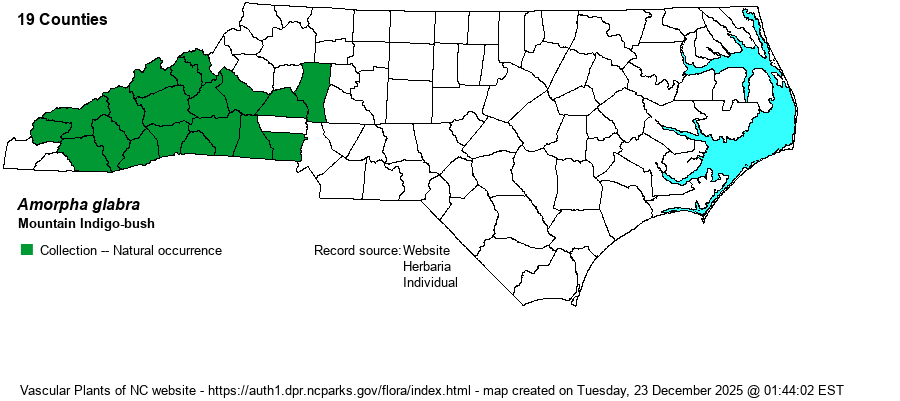| Author | Desfontaines ex Poiret | |
| Distribution | Limited to the southern and central Mountains and the southwestern quarter of the Piedmont -– north to Mitchell and Iredell counties.
This is a broad southern Appalachian endemic, occurring widely onto the Piedmont and parts of the Coastal Plain farther to the south. It ranges from western NC and TN south only to central SC, GA, and southern AL.
| |
| Abundance | Infrequent to fairly common on the whole; generally widespread, as it is found in nearly all counties in the southern Mountains and southwestern Piedmont, but not abundant anywhere. | |
| Habitat | This species grows mostly on fairly dry to mesic wooded slopes in the lower Mountains and foothills, sparingly into lower elevations in the Piedmont. It occurs in various oak-dominated forests, and often can be found along forest borders. | |
| Phenology | Blooms from May to July; fruits from July to October. | |
| Identification | This is a deciduous shrub that grows to 3-6 foot tall. The leaflets (9-19) are fairly large for the genus, averaging about 1.5 inches long. The flowers are deep purple, with several racemes typically appearing at the end of a twig. As this is essentially the only indigo-bush growing on dry to mesic mountain and foothill slopes, it should not be confused. The somewhat similar A. schwerinii grows mostly to the east (especially in the Uwharries) and has shorter racemes; and A. fruticosa is larger and does not grow on moderate slopes. | |
| Taxonomic Comments | None
| |
| Other Common Name(s) | Appalachian Indigo-bush, Mountain False Indigo | |
| State Rank | S3S4 | |
| Global Rank | G4? | |
| State Status | | |
| US Status | | |
| USACE-agcp | | |
| USACE-emp | | |

